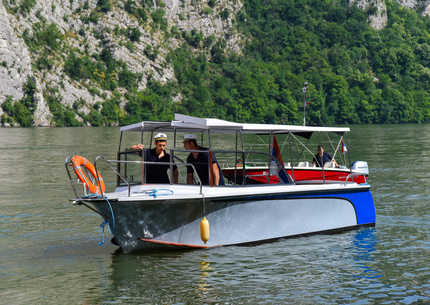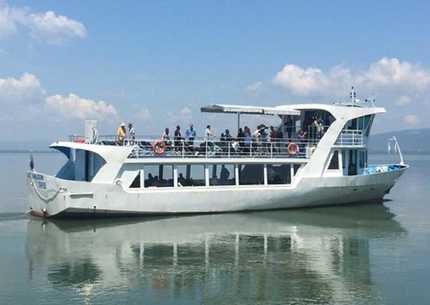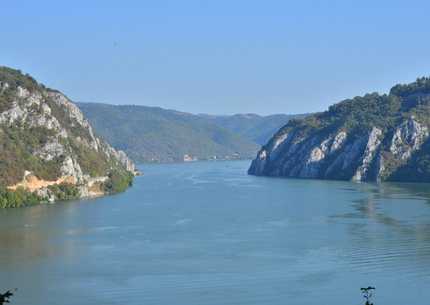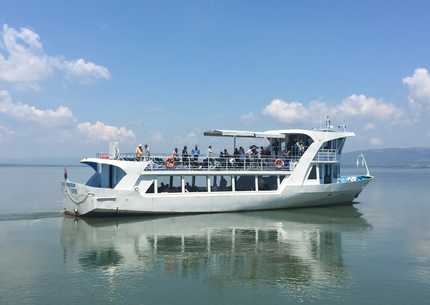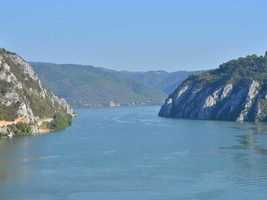
The Iron Gates Gorge is one of the main tourist's attractions in Serbia. Here the mighty flow of the Danube has pushed its way through the Carpathian range shaping a remarkable gorge, the most spectacular tract of its 2900 km long flow. The whole of the Serbian part of the Iron Gates lies within the confines of the Djerdap National Park, stretching from Golubac Castle to the "Djerdap One" dam. Same 100 km long, the gorge is basically a river valley made up of four ravines, Gornja klisura, Gospodjin vir, Veliki Kazan, Mali Kazan, and Sipska klisura. They are separated from each other by three broader sections of the river where several villages and the townlet of Donji Milanovac nest. A part of the grandeur of the Gorge can be viewed from the numbers: one of the greatest river depths in the world has been measured in Gospodjin vir ravine. The cliffs of the canyon in Veliki Kazan are about 300 m high, while the riverbed in this part is narrowed down to 150 meters. The precipitous sides of the Gorge are mostly covered in dense forest which has preserved many endangered plant and animal species. The most important archaeological locality of this otherwise exceedingly historical area is Lepenski vir. The visitors' center of the Djerdap National Park is the best place to learn about the many different faces of the National Park. Tabula Traiana was put up in 103 AD to commemorate the end of the construction works on the road commenced by the Roman emperor Trajan. This was the first road that passed through the wilderness of the gorge and was quite a construction feat. Probably the nicest view of the entire gorge is to be enjoyed from a rest area in the Veliki Kazan ravine. The sight of the potent river and wild forests is fascinating but the 40m tall portrait of Decebalus, carved into the rocks on the other side of the Danube between 1994 and 2004, steals the show. Decabal was the last king of the Dacians, a people that lived in present-day Romania.
To receive our best monthly deals


